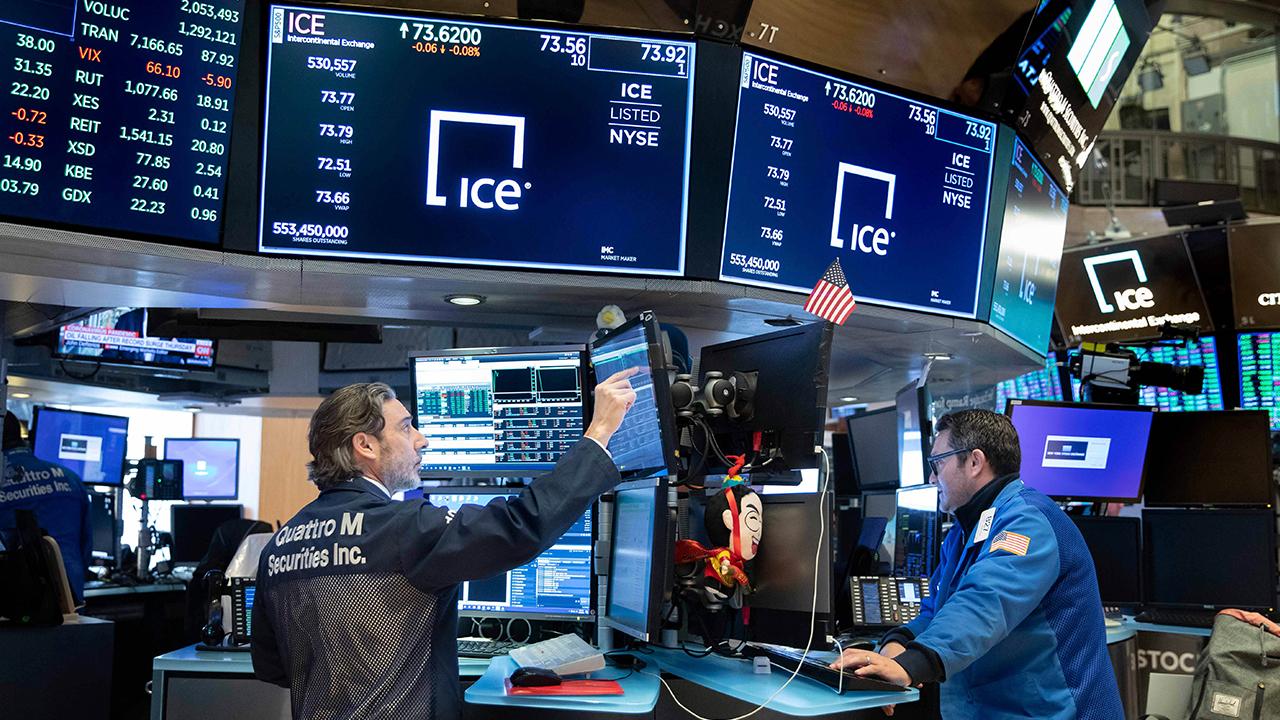Despite coronavirus, new bull market can run
The S&P and the Dow are on pace for the worst month since the 1930s
Stock-market investors searching for a bottom to the sharpest bear market in history may have to keep looking.
The benchmark S&P 500 fell nearly 3 percent on Monday, extending the decline from its Feb. 19 peak to 33 percent as the COVID-19 pandemic brings the U.S. economy to a near standstill. The Dow Jones Industrial Average has dropped 37 percent in the same time frame and is now on pace for the worst month since September 1931, according to analysis by the Dow Jones Market Data Group.
A “peak in the number of new cases daily” is the most important thing that needs to happen before the next bull market can begin, wrote Savita Subramanian, equity strategist at Bank of America. During the SARS epidemic of 2003, both the Shanghai and Hong Kong indexes hit bottom shortly after the number of daily global confirmed cases crested, she added.
MNUCHIN: TRUMP ADMIN DETERMINED TO SUPPORT AMERICAN BUSINESSES, WORKERS
COVID-19 has infected more than 46,963 people in the U.S., and the number of new cases is growing rapidly each day as increasing test availability identifies previously unknown sufferers. State governments have issued “stay-at-home” orders in an effort to slow the spread of the virus.
“Whereas the Fed and fiscal stimulus are widely seen as market panaceas, so far they have not been particularly potent” in addressing the decline in equities, she wrote, adding that she would like to see banks tightening lending and a further softening of the economy before her checklist is complete.
The Federal Reserve on Monday took major action to support the U.S. economy, announcing it will buy Treasury securities and agency mortgage-backed securities in “amounts needed to support smooth market functioning and effective transmission of monetary policy to broader financial conditions and the economy.”
FED'S CORONAVIRUS ACTIONS MAKE TRUMP VERY HAPPY WITH POWELL
That afternoon, President Trump, a frequent critic, praised Fed Chair Jerome Powell for his actions to combat the coronavirus.
The central bank also introduced three new lending facilities designed to provide up to $300 billion in financing to support the flow of credit to employers, consumers and businesses.
That action is on top of the central bank's previous reduction of interest rates to nearly zero and other programs to ensure markets function correctly.
On the fiscal front, Congress has passed two stimulus plans and has a third package, which is approaching $2 trillion in size, in the works but is meeting resistance among Democrats on Capitol Hill.
“Simplistically, for markets to recover from the current crisis, we think the market will need to be able to put limits on the tail risks that are currently center-stage and for new tail risks not to surface,” wrote Goldman Sachs strategists Kamakshya Trivedi and Zach Pandl.
They agree with Subramanian that a so-called flattening of the curve is needed before markets can bottom, but would also like to see more visibility into the depth and duration of the economic disruption and make sure there’s no intensification of other less likely hazards.
Their other criteria, including a “sufficiently large global stimulus,” “a mitigation of funding and liquidity stresses” and a “deep undervaluation across major assets and position reduction” may be a bit closer to occurring.
CLICK HERE TO READ MORE ON FOX BUSINESS
“As in the global financial crisis, sufficient progress on some may substitute for the others, and some assets may be more sensitive to one or other of these conditions,” Trivedi and Pandl wrote. “But a broadly favorable mix of these conditions will likely be required for us to turn more decisively positive.




















